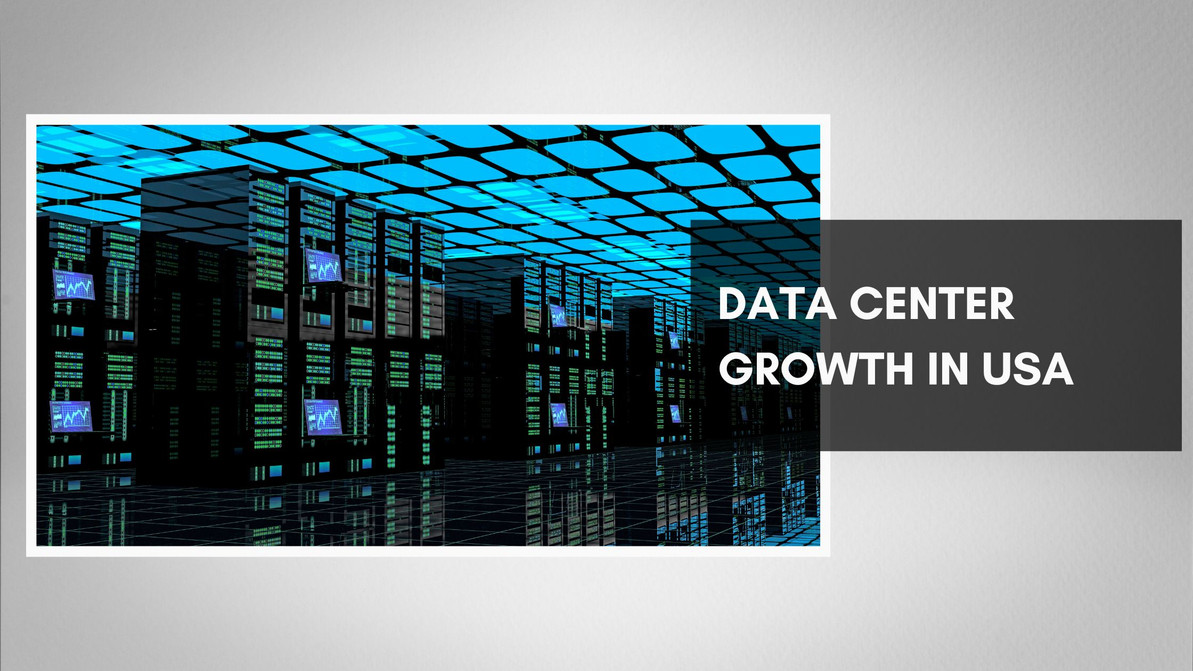How Fast Are Data Centers Expanding in the US?
Data Center Expansion: A Glimpse into Growth
Rapid Expansion and Market Scale
The scale of data center expansion in the United States is unprecedented. According to a JLL report, data center construction surged to a record in 2023, with 3,077.8 megawatts (MW) under construction in primary markets . This expansion is a testament to the insatiable digital demand from businesses, governments, and consumers alike.
The market's rapid scale-up has intensified competition among primary data center markets. Key locations have registered a 26 percent growth in 2023, indicating a significant upward trend . Such growth underscores the sheer velocity at which data centers are expanding their footprint across the country.
Key Metrics and Forecasts
Market projections reveal the United States Data Center Market will reach 14.81 thousand MW in 2024 and grow at a compound annual growth rate (CAGR) of over 10% . This rate reflects the sustained demand for digital infrastructure, with projections estimating the market will reach 24.11 thousand MW by 2029.
These figures highlight not only the expansion but also the urgency and scale of the data centers being developed. Growth projections indicate that data centers are set to become even more integral to the digital economy in the years to come.
Market Dynamics: Primary vs. Secondary Markets
Dominance of Primary Markets
Primary markets such as Northern Virginia and Silicon Valley continue to lead the data center race. These regions offer unparalleled connectivity and infrastructure, making them attractive to enterprises with heavy data needs. However, this prominence also leads to congestion and limited power availability.
While primary markets lead, they are not without challenges. The increasing demand strains existing infrastructure, creating supply chain bottlenecks and power constraints that may influence future growth.
The Ascent of Secondary Markets
Secondary markets like Phoenix, Atlanta, and Portland are steadily gaining ground. These regions are increasingly recognized for their viable alternatives, with lower costs and favorable business environments. They now represent almost 20% of capacity under construction .
This growing prominence of secondary markets is a testament to their ability to cater to regional digital demands. Their rise suggests a more distributed data center ecosystem in the future, with new markets emerging to cater to regional needs.
Drivers of Expansion: What's Fueling the Boom?
Artificial Intelligence (AI)
AI's burgeoning use cases are demanding ever-greater computational capacity. From natural language processing to computer vision, AI necessitates significant data processing power, which only modern data centers can provide.
The sheer volume of data generated and analyzed by AI applications intensifies the need for specialized data infrastructure. This demand is a driving force behind the recent surge in data center development.
Cloud Services
The cloud computing industry has redefined how businesses handle their digital operations. This paradigm shift to cloud-first strategies has escalated the demand for robust data center facilities that provide storage, networking, and compute power on a global scale.
Cloud computing's impact on data center growth is evident. The increasing adoption of hybrid cloud strategies further amplifies the demand for scalable, reliable, and secure data center infrastructure.
Challenges and Opportunities in Data Center Expansion
Infrastructure Limitations
Infrastructure remains a significant concern as the demand for data centers grows. Power availability is becoming a limiting factor, particularly in primary markets where infrastructure strain is most pronounced.
This power scarcity highlights the need for innovative solutions. Data centers are increasingly looking to renewable energy sources and grid optimization to mitigate these limitations.
Sustainability and Environmental Impact
The environmental impact of data centers has come under scrutiny due to their significant energy consumption. Efforts to optimize energy usage through efficient cooling and renewable energy are becoming critical.
Data centers are making strides toward sustainability, but the pace of expansion demands that these efforts intensify. This creates an opportunity for innovation, as data centers seek to align with global sustainability goals.
Investment Trends and the Future Outlook
Investor Sentiment
Investor interest in data centers has grown due to their perceived resilience and growth potential. These investments align with the increasing digitalization of the economy, ensuring data centers are seen as long-term bets.
Investment strategies are shifting to accommodate the expanding scale and complexity of data centers. This includes an emphasis on sustainable practices, advanced technologies, and strategic geographic positioning.
Future of Data Centers
The data center market is set for continued expansion. The relentless demand for digital infrastructure, coupled with technological advancements, suggests a robust trajectory for the industry. Market consolidation and M&A activity are likely to shape the industry's future.
In this rapidly evolving landscape, the sustainability of data centers will become increasingly crucial. Data centers that can innovate and align with environmental goals will likely lead in the years to come.
Recent Posts
-
Why It's Important to Purchase Genuine HPE Replacement Parts
When maintaining the integrity and performance of your Hewlett Packard Enterprise (HPE) systems, the …Jun 28th 2024 -
Mastering Modern Data: Cutting-Edge Storage Solutions in the AI Era
In the rapidly evolving digital era, Artificial Intelligence (AI) has become a cornerstone of innov …Jun 20th 2024 -
Product Comparison: HPE Q1J00A MSA 2050 vs. HPE Q1J10A D3710 vs. HPE 717870-001 MSA 2040
IntroductionIn today’s data-driven world, the demand for efficient, reliable, and scalable data stor …May 23rd 2024




